NOTE: This post is part of a continuing series of observations: [ Next >> ]
This exciting discovery was made right in the heart of North Texas, in a very typical Dallas/Fort Worth suburb. In the pictures below you will find a pair of Mute Swans nesting in the marshy, reed-filled end of a small pond located in a popular community park.
When we arrived at the park we found the female alone on her nest and busy incubating her eggs. It is not clear when the nest was built or when incubation began. Mutes Swans reportedly begin nesting in March or April, so it is likely that we are tuning in early in the process. The incubation period for Mute Swans is from 36 to 38 days, so we may have to do a little arithmetic after the eggs hatch in order to get a better idea of when the nesting began.
The pond the Swans have chosen to nest on is large and mostly open water. The north end, however, is thick with cattail reeds and is a great place for the swans to set up shop. The nest is a huge mound rising up out of the water and is constructed mostly of the abundant reeds. The female swan was observed adding even more vegetation to the nest while we were present.
Very close to the swan nest is a large Beaver lodge. This is perhaps the largest Beaver lodge I have yet seen in the DFW Metroplex. We will have to keep a close eye on it over the next several weeks to determine if it is active or not.
In addition to possible Beavers, there were many other animals to be seen in and around this pond. This place was a real hotbed of urban wildlife activity, and I have many more pictures of different animals to share with you over the coming days and weeks.
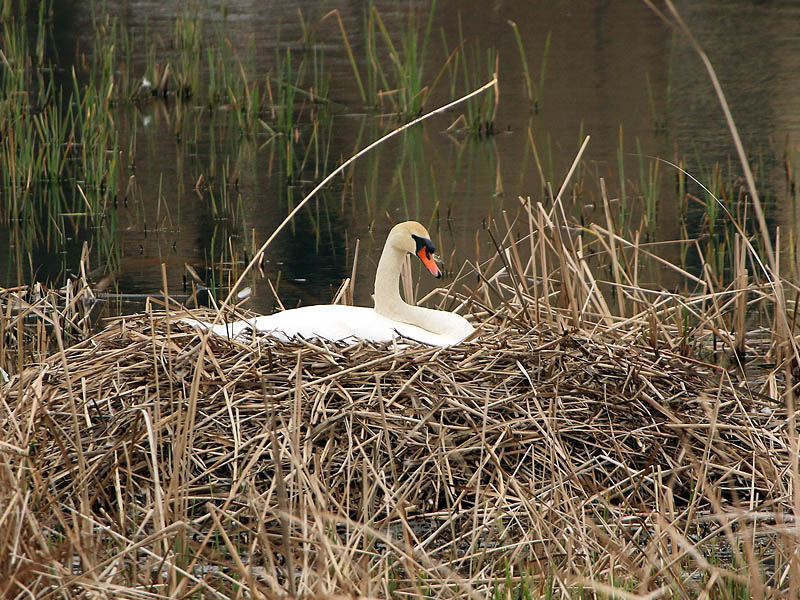
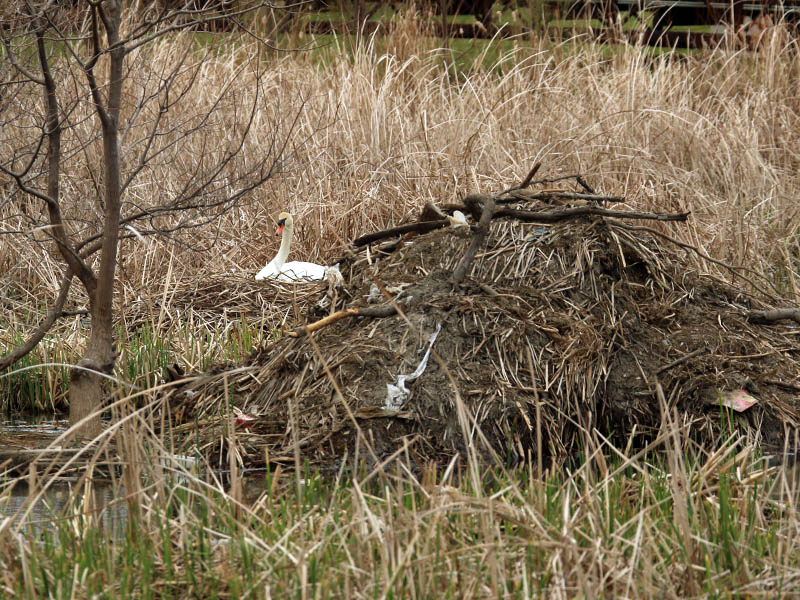
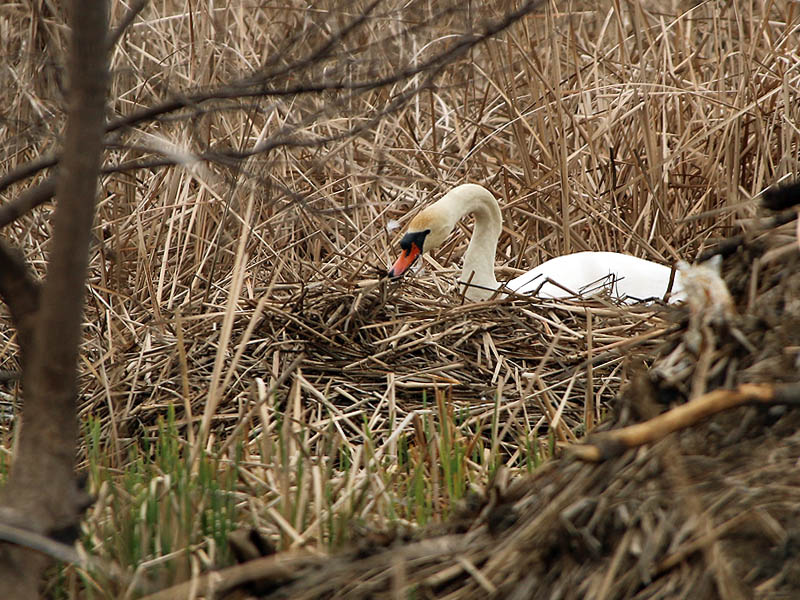
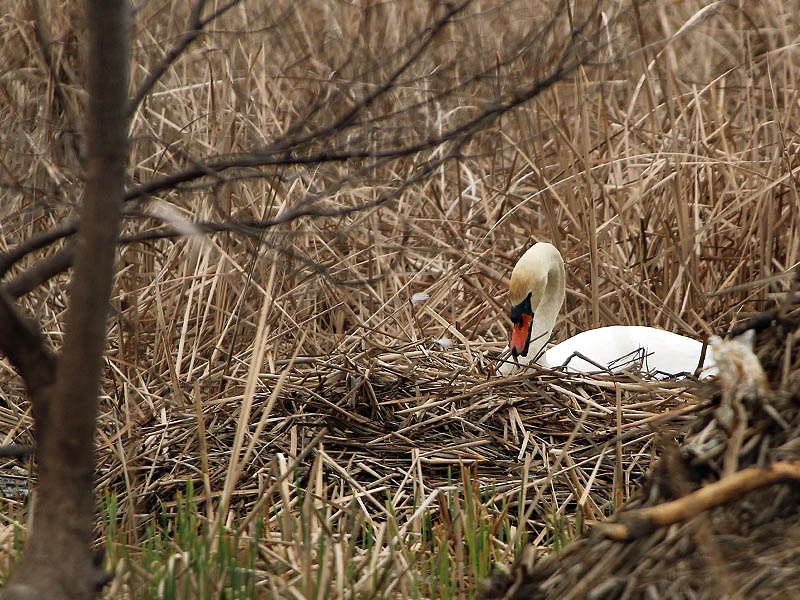

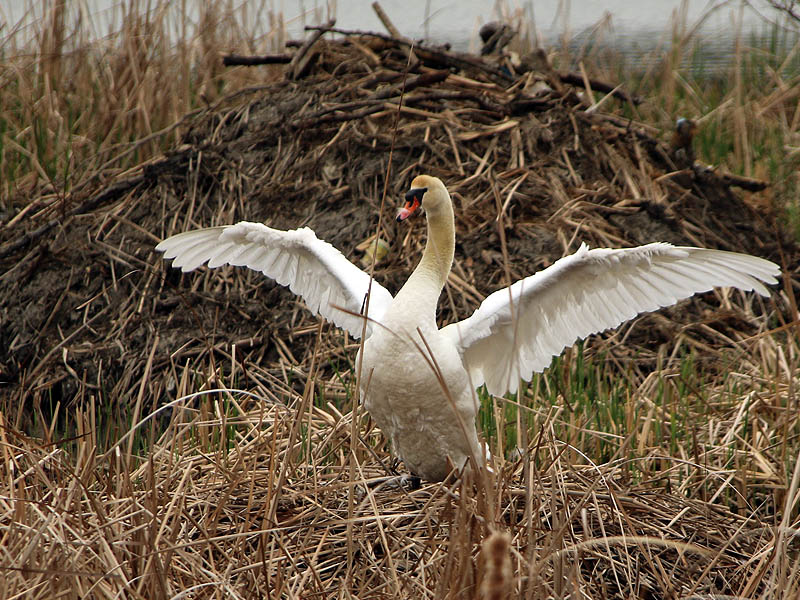

The male Mute Swan was also present on the pond this early afternoon. He was busy patrolling around the perimeter of the small lake and occasionally feeding. Every so often he would return to the nest to see how things were, and then he would turn around and re-enter the main body of the pond.
It was interesting to watch the big bird feed. In order to reach aquatic vegetation growing at the bottom of the pond, the male swan would often submerge his entire head and neck—all the way up to his shoulders! When he would pull his head back out of the water, he would breach the surface slowly, often comically blowing bubbles as he did.

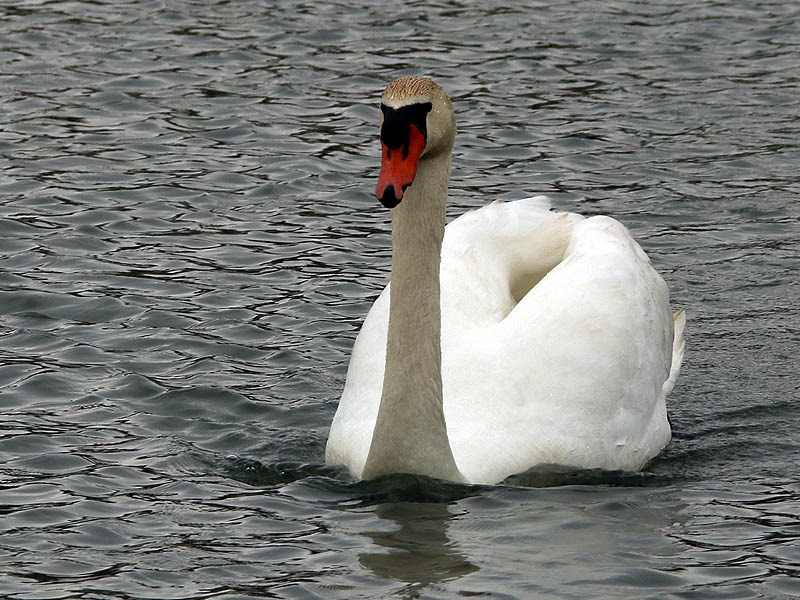
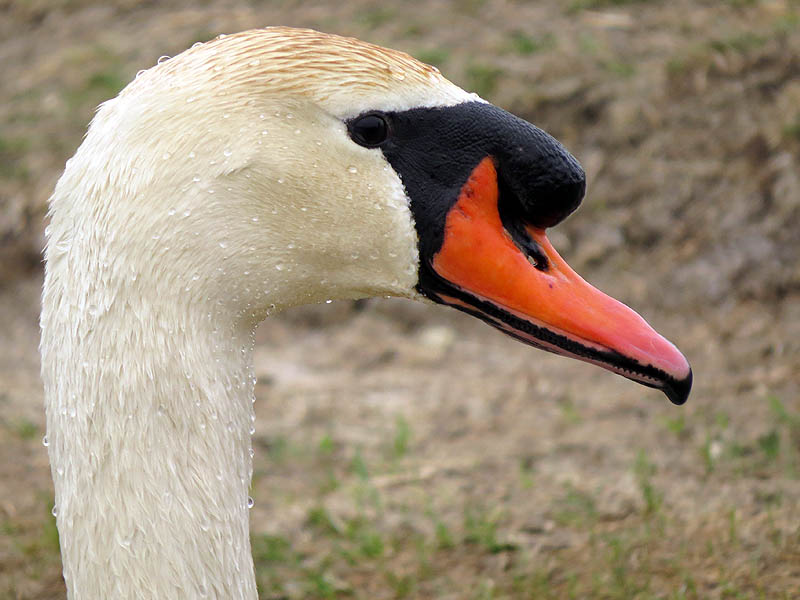

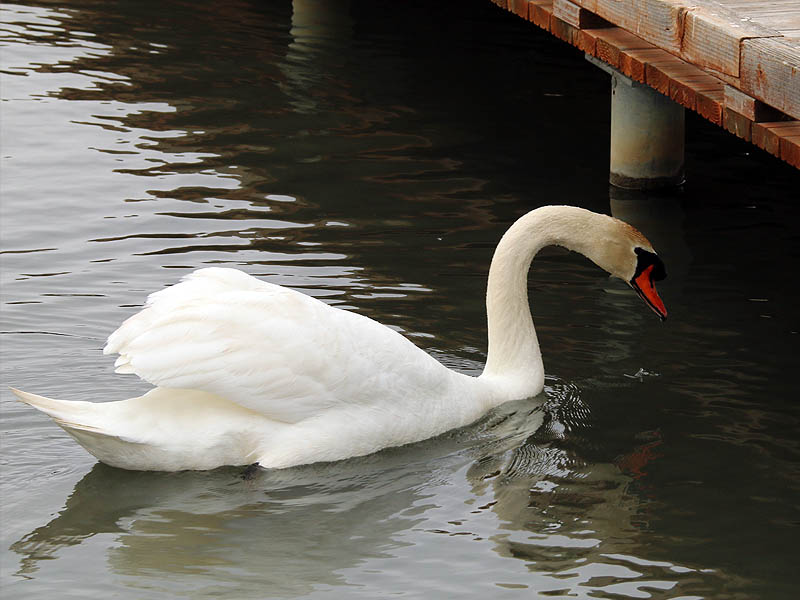
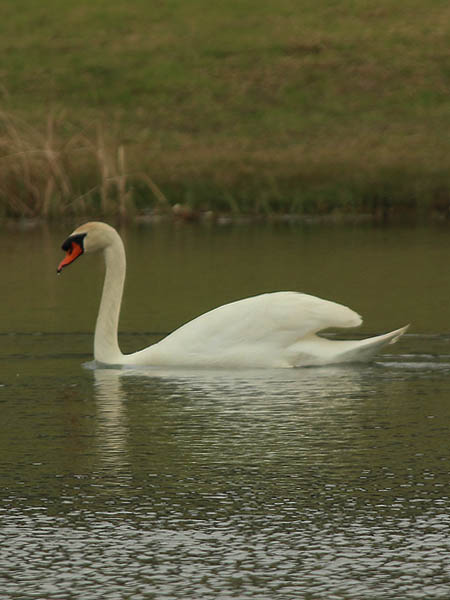
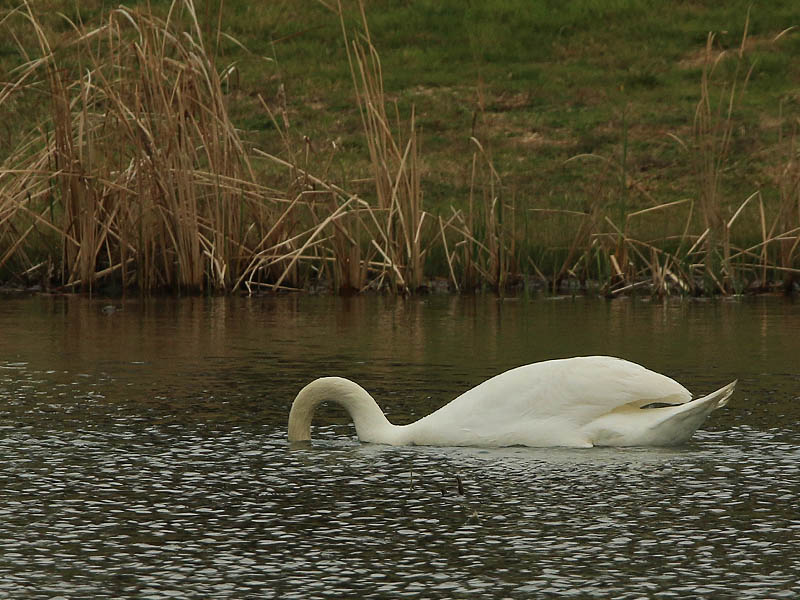
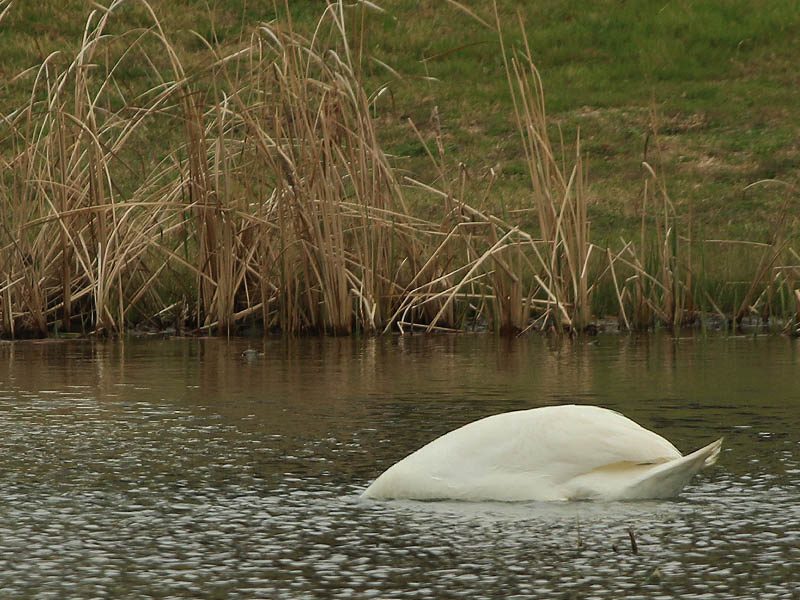
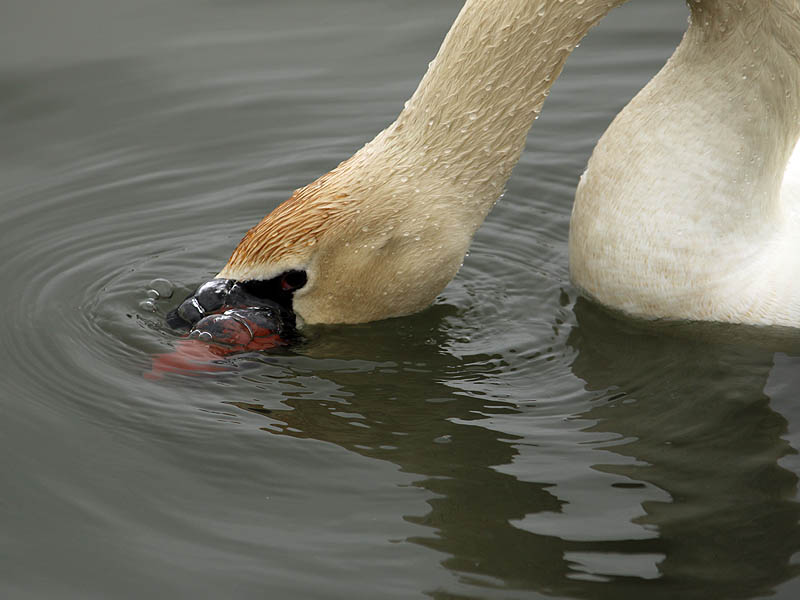
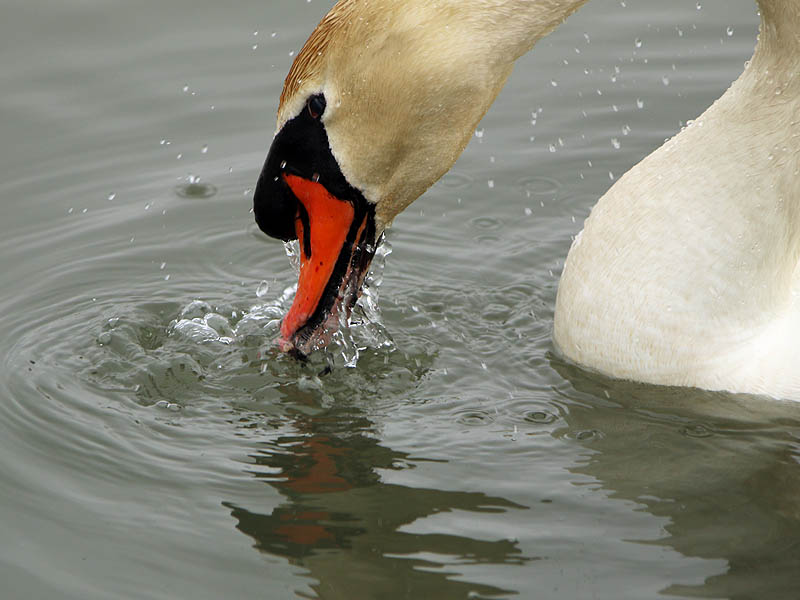
NOTE: This post is part of a continuing series of observations: [ Next >> ]



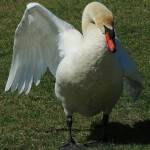
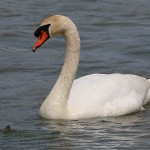

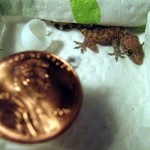
As an avid bird watcher I have never seen Mute Swans. Now that the chick have hatched may I know the location of this pond?